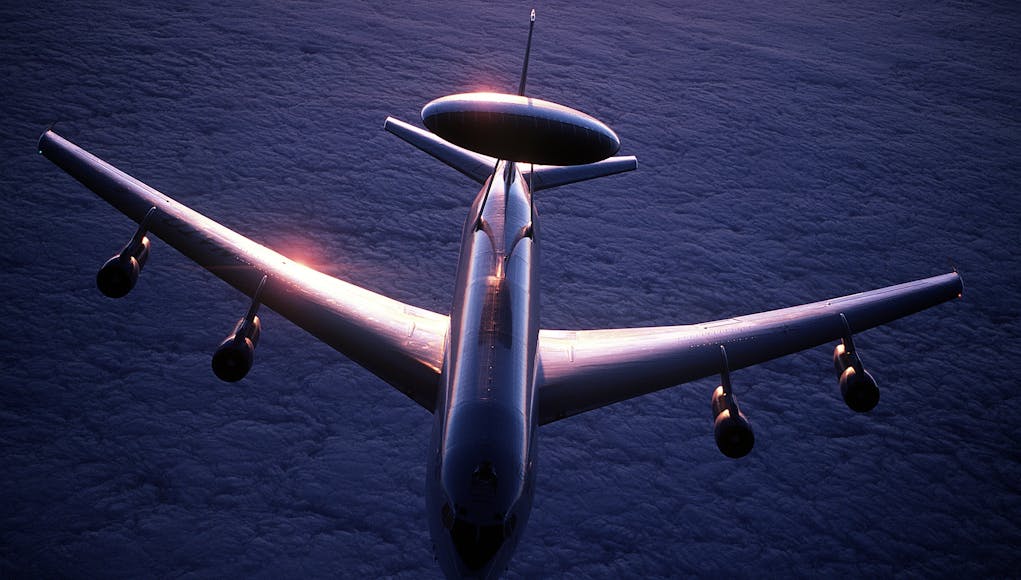In a bid to secure the European Political Community Summit in Moldova, NATO’s airborne surveillance provided skyward protection.
The AWACS (Airborne Warning and Control System) flights were from 31 May to 2 June, as they fly over Allied airspace.
“NATO AWACS can detect aircraft, missiles and drones hundreds of kilometres away, making them an important early warning capability,” said NATO Spokesperson Oana Lungescu, highlighting the strategic importance of this surveillance system. She continued, stating that “Moldova is a close and long-standing partner to NATO.”
These measures are reflective of NATO’s heightened vigilance in eastern Europe, a response to Russia’s ongoing conflict in Ukraine. This has prompted NATO to bolster its air presence in the region with additional fighter aircraft, surveillance aircraft, and tankers. Regular AWACS patrols have been tracking Russian warplanes near NATO borders, focusing their efforts over eastern Europe and the Baltic Sea region.
These AWACS flights, operating from fourteen modified Boeing 707s, are capable of maintaining an impressive vantage point. Flying at approximately 10 km altitude, a single AWACS can monitor the airspace within a 400 km radius.
NATO’s AWACS have historically provided surveillance for major international events, from NATO Summits like the one in Madrid last June, to high-profile events such as international football tournaments or the Olympics. Their upcoming assignment in Moldova will be another addition to their global security portfolio.














Another capability we have decided to take a holiday from.
In a hot war how long would you expect that platform to last?
If is fine for a constrained conflict like Ukraine where Russia doesn’t dare attack them for fear of NATO retaliation simply giving more kit to Zelenski would finish the Russians off.
Kinda depends how they are used. In theory they have long enough radar to be kept well away from the front line, meaning only long range missiles can hit them and you would assume they would be protected by a fighter escort.
Main issue is numbers, we don’t have enough of anything to last long, one key asset taken out in pretty much any capability and issues would rapidly go badly.
Imagine the Falklands happened again, and we lost half a dozen ships, what would be left to fight.
I don’t think the Falklands is a fair comparison. Argentina has little left and we have forces there capable of repelling what little they can muster. Also one Type 45 must have at least 10 times the fire power of the old destroyers. Whilst Russia is a different kettle of fish if the current training exercises are anything to go by we will not be alone (for a change).
Yeah a war involving Argentina again is extremely unlikely, but it showed a technological inferior enemy managed to take out multiple ships. No reason not to fear that the same would be case in the future if we end to war that involved a naval task force. The T45 are a big step up but equally most nations have aviation arms that are a big step up from what Argentina had at the time. The Skyhawks were out dated even at the time and their missiles were effectively ww2 tech.
Not sure they were that technologically inferior in all departments. Their jets were oldish but faster than ours, their army’s night sights were better, their marines had tracked, armoured assault craft. Their Exocets were very modern missiles and damaged or destroyed a fair few of our ships.
Some say many of our Rapier systems did not work very well.
Not only rapier failed, pretty much all air defence assets failed other than the harriers, but going into the fight they were considered cutting edge. Joy of missiles being too expensive to properly test them.
Not sure lack of testing was the issue. They were designed to deploy from a dry hanger into the field in Germany and shoot down Warsaw Pact aircraft. But they were stored in the bowels of a ship for several weeks transit to FI – the salty atmosphere played havoc with the electronics, I believe.
Do you expect it to fly within range of SAM sites?
Air to Air missiles now have crazy ranges.
These are civvy platforms so they don’t fly crazy high.
They are vulnerable….